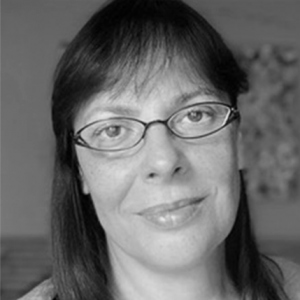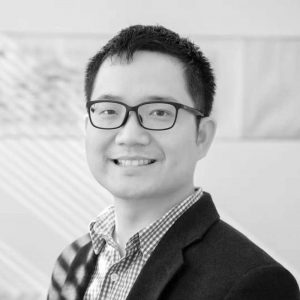Building Community in the Remote Classroom
While the Fall 2020 semester continued to pose remote teaching challenges, it also presented an opportunity for instructors to be more prepared than the emergency move to remote teaching in the spring. On November 19, 2020, TLL and Open Learning cohosted a speaker series panel discussion about building community in the classroom, featuring Dr. Simona Socrate (Senior Lecturer in Mechanical Engineering), Mr. Kang Zhou (Lecturer in Global Languages), and Dr. Ari Epstein (Associate Director and Lecturer in Terrascope). The panelists shared various strategies intended to help students build community with their peers and their instructors. Some common practices included creating virtual spaces for students to meet each other and using mentoring programs.
2.001 Strategies
Dr. Simona Socrate’s strategies for a large introductory engineering subject
2.001 (Mechanics and Materials I) is one of the introductory classes in the Course 2 major, with primarily sophomores new to MechE. Professor Simona Socrate and the 2.001 teaching staff—which consisted of 3 graduate TAs, 4 undergraduate TAs, 2 course mentors, and 2 project mentors—worked to create a strong support network and help the students who suddenly had to work with people they hadn’t created bonds with yet.
Smaller cohorts and Pset parties
The 120 students were split into 2 cohorts to facilitate a sense of community. They worked in groups for discovery lab activities using kits that were shipped to all students. Groups were reshuffled every month to help students meet each other, and students could ask to be reassigned to another group if needed at any time. Pset parties were created via Zoom meetings that were open from 7 pm to 11 pm every evening, with rooms for each of the Pset problems,a room to socialize, and another for students to work in peace.
Mentoring
Socrate also implemented a mentoring program. If students were struggling in some way after about a month in the class, whether with personal or academic issues, they were paired with a course mentor who they met with regularly. These meetings started as individual meetings and eventually transitioned to small group meetings with 2 or 3 students, focusing on fostering a growth mindset among students. The class midterm and final involved projects instead of written exams and students were able to seek help from project mentors—upperclass students who had previously done well in the class.
Piazza
Finally, the 2.001 staff made use of Piazza and office hours to support students. They achieved a 14-minute average response time on Piazza this past semester, including nights, weekends, and holidays, so that students didn’t feel alone if they were struggling. As a result, the number of students who engaged on Piazza was quite high, even among a class of 120.
21G.109 Strategies
Kang Zhou’s strategies for a medium-sized Global Languages subject
Building trust and an inclusive community
Zhou often started class with brief icebreaker activities to build a supportive community, rather than jumping straight into course content. Students were also required to post self-introduction videos on an application called Padlet, and commented on their peers’ videos on topics such as common interests or their Chinese language learning experiences. Students were also asked to share learning strategies and reflections. In the beginner class, students chose 2 Chinese characters and shared mnemonic strategies for memorizing those characters to the class. In the advanced class, students posted their thoughts to an online discussion and responded to their classmates’ posts.
Adjusting assignments
Assignments were adjusted so that they were more varied and designed to be visible to all community members. Students worked on projects to share their knowledge by producing posters, podcasts, vlogs, or other digital content. Examples of vlogs included students introducing one of their favorite dishes and its cultural context to their classmates, and demonstrating the cooking process.
Creating a sustainable community
Before each class, Zhou made a pre-class warm up video sharing his personal experiences and stories related to the lesson topics, which helped to establish a long-term student-to-teacher connection. Zhou also hosted a weekly online Chinese table, which was a virtual space for informal conversation about topics such as Chinese festivals, dialects, and popular TV dramas. To make the class community dynamic and increase the potential involvement of people from different backgrounds, beginner students were asked to teach family and friends what they had learned. In advanced classes, students were able to chat online with native speakers to build their language skills and further deepen cultural awareness.
12.000 Strategies
Dr. Ari Epstein’s strategies a first-year learning community subject
Students in 12.000, a required subject for students in the Terrascope first-year learning community, had a head start on community building as they were able to participate in social events and other activities over the summer before the class began. Students’ advisors and associate advisors are part of the Terrascope community alongside additional upperclass students.
Group introductions
In the beginning of the semester, all members of the community (students, staff, Undergraduate Teaching Fellows, advisors, alumni mentors) created Google slide introductions where they placed 2 pictures: one of something that had significance to them and another of themselves. In the speaker notes, they wrote a few sentences about how the first picture reflected their life. Then, a jigsaw group format was applied: students were placed into groups of 4, for a total of 12 groups. Before meeting each other, they looked at their members’ introductions and wrote something interesting about the slides as a reflective assignment. After that, the 12 groups of 4 were reshuffled into 4 groups of 12 people, with students’ original 4-person groups remaining intact. Students then read the introduction slides for the new group members as well, allowing them to get to know at least 12 community members from the start.
Multiple communication methods and class ownership
The 12.000 class also built community through weekly lunches, a 24-hour Terrascope Zoom room for students to hang out, and the Terrascope-wide Discord which had GIR channels, recreational channels, etc. Students were given ownership over their class experience, and also built community around how they wanted to run the class. They would have discussions about whether they would vote on a certain decision, appoint a moderator, or decide based on consensus. Making decisions together like this created a different kind of community.
Regular student check-ins
Students submitted reflections every 2 weeks, which allowed the teaching staff to hear how each student was doing. Each undergraduate teaching fellow (UTFs) was responsible for a few students, reaching out to and keeping an eye on them. At weekly staff meetings, instructors checked in with UTFs to see what was going on in the community.
Some other strategies that worked included UTF office hours scheduled around assignment deadlines, which created a good way for students to convene outside of class and build community more informally, and UTF breakout rooms with 10-minute icebreakers before class to get students relaxed. Students were able to opt into an alumni mentor program. They were randomly assigned to an alumni mentor to talk about anything, including topics not related to class, and were also asked to pick a mentor to reach out to during the semester.
Additional Tips
Create resources for mentors
In 2.001, Professor Socrate created a Google Doc template for mentors to use during initial meetings with students, along with a weekly guide for activities to do with mentees during a given week. Mentored students also had resources, such as worksheets with scaffolding mechanisms to help students break down homework problems into smaller steps.
Create limited time windows
By limiting the time during which students can convene, it is more likely they will meet each other. For example, with Pset parties, you can tell students to join the Zoom room on the hour or on the half-hour. This way, they have a greater chance of finding other people to work with, as opposed to getting discouraged if they join at a time with no other students available.
Gauge students’ willingness to turn on cameras
In 2.001, Professor Socrate sent out a survey over the summer asking whether students would be comfortable having their video on all the time, on occasion, or only if they were made aware of it ahead of time. In each collaborative learning group, there would be at least 1-2 students who had responded that they were always willing to have their camera on; this created a good balance among groups. In 12.000, Epstein has found that students are generally accepting of each other and don’t hold it against a peer if they have the camera off but is still participating.
Panelists

Dr. Simona Socrate
Senior Lecturer, Mechanical Engineering (2.001)

Dr. Ari Epstein
Associate Director and Lecturer, Terrascope (12.000 co-instructor)

Kang Zhou
Lecturer in Chinese, Global Languages (21G.109)
Written by Melissa Cao

